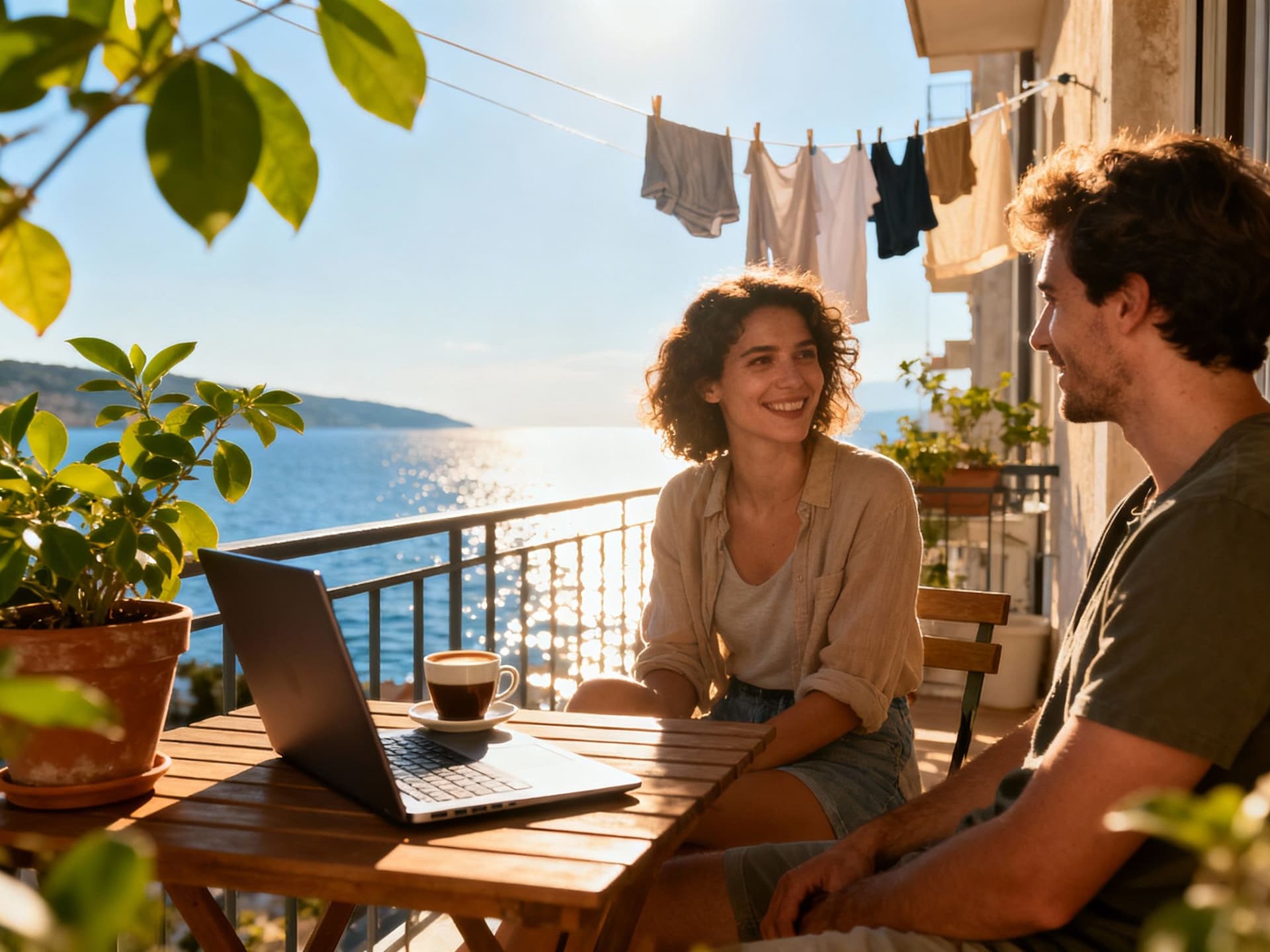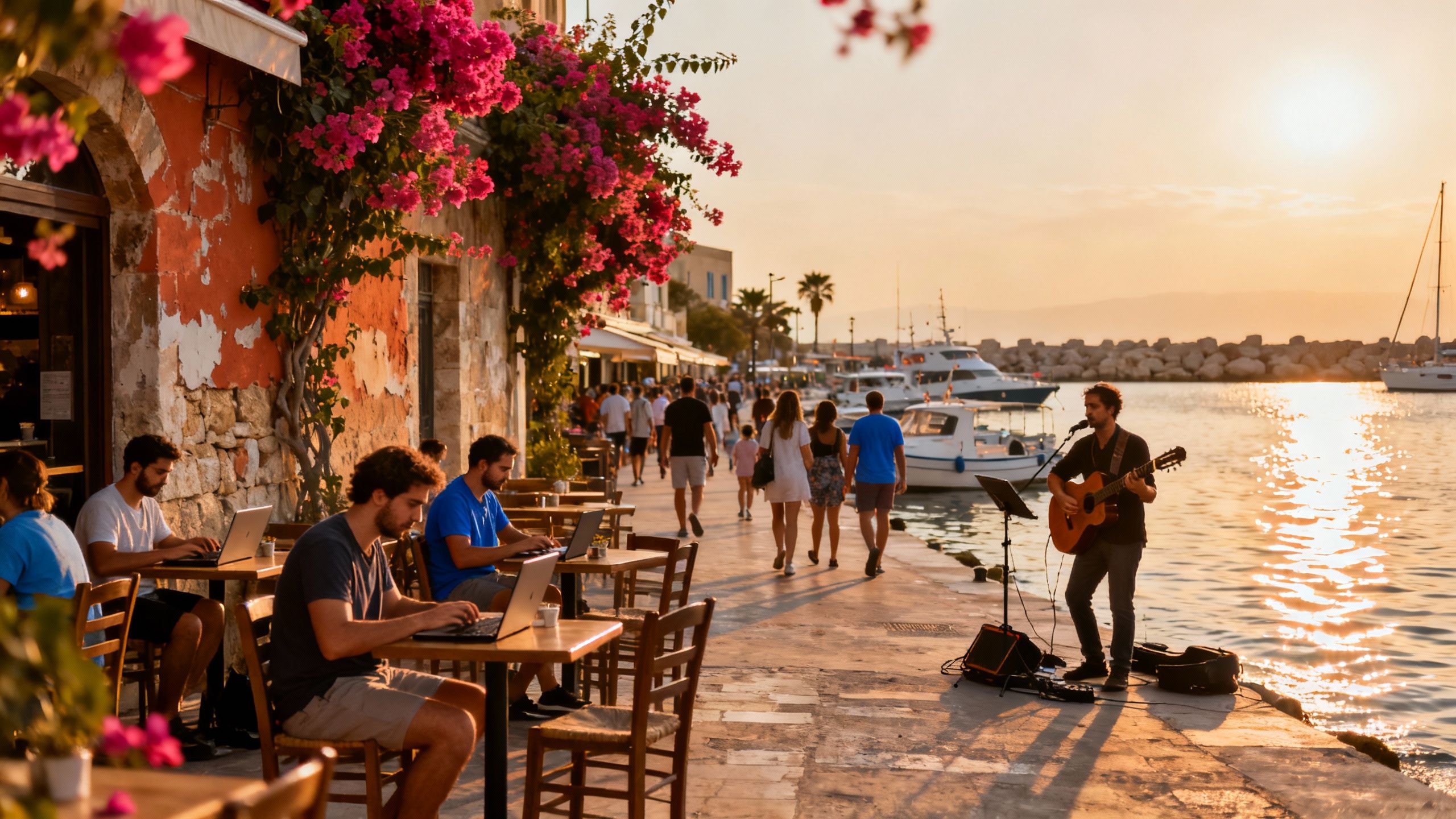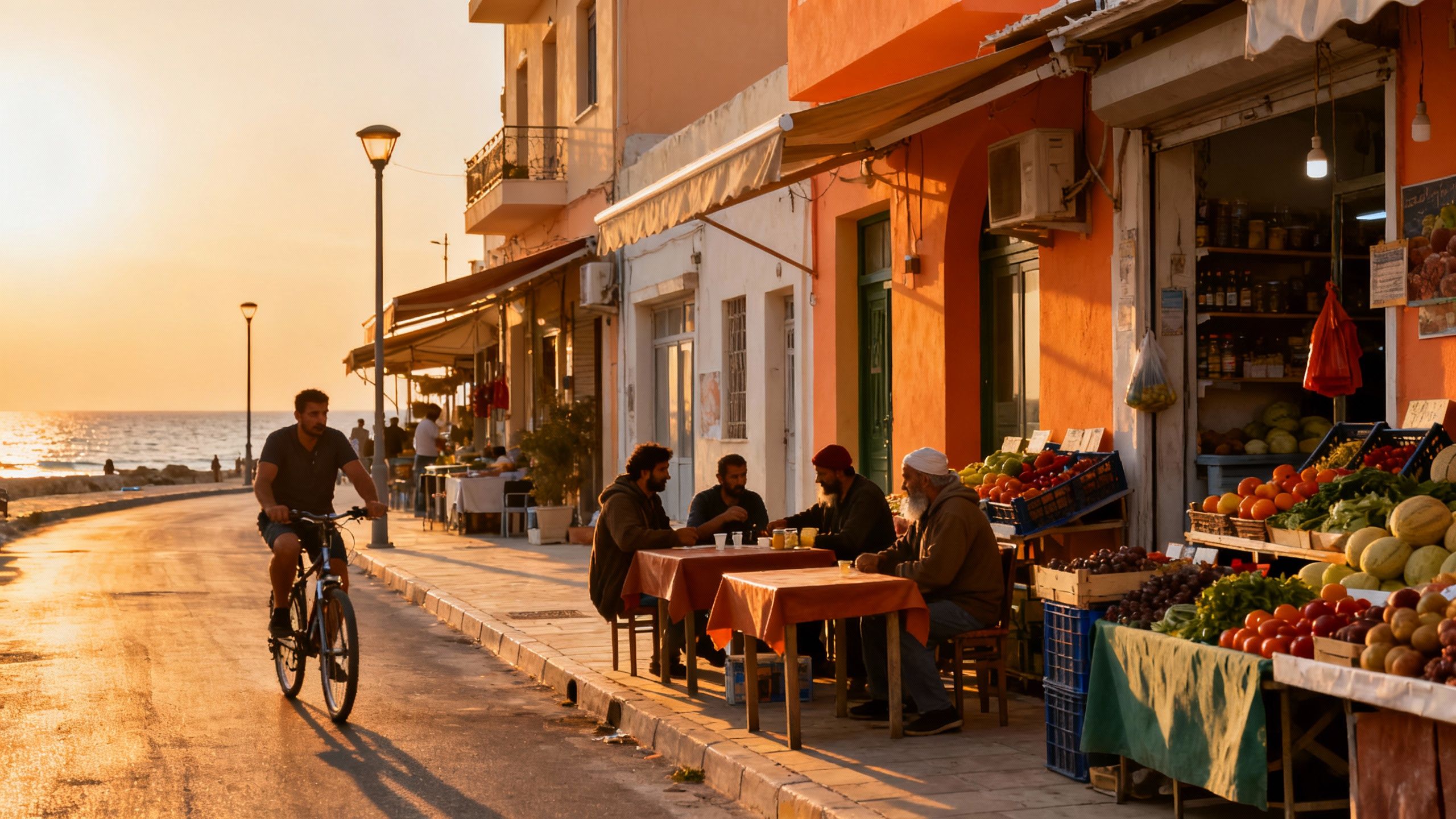Why coast prices lie: Budget for a real Croatian home
Fall for Croatia’s lifestyle, not a listing. Budget realistically: add 7–12% transaction costs, 5–15% renovation buffer, and season-driven running costs to avoid surprises.
Imagine stepping out for morning espresso on Split’s Riva, the sea glittering, fishermen unloading white nets — and still being able to afford a small flat with room for a home office. That’s the dream. But Croatia’s reality mixes sunlit coastal fantasy with sudden line-items that crush naive budgets. This piece starts with the life you want, then flips to the numbers you need — so you can fall in love without bank-account heartbreak.
Living the Croatia lifestyle — what you’re actually buying

Croatia is equal parts ancient stone and bright startup energy. Mornings in Zagreb are for strong coffee on Tkalčićeva; afternoons on the Dalmatian coast mean sun, sea and late lunches of grilled fish and buzara. For nomads, the appeal is obvious: walkable towns, seasons that feel like chapters, fast cafés that double as coworking spots, and islands with an every-other-day pace that forces you to slow down. When you budget here, you’re buying lifestyle as much as square metres.
Zagreb, coastal towns and islands — three different daily rhythms
Zagreb hums with cafés, coworking spaces and year-round services; Split mixes Roman walls with remote-work beach time; Hvar, Korčula or Brač offer gorgeous summers and quiet winters. Your budget should reflect that: city flats trade off price for convenience, coastal homes cost more per square metre but often need extra maintenance and seasonal running costs.
A day in the life: sensory details that matter when choosing a place
Picture this: a laptop on a café table in Rovinj while rain drums on tile roofs, or a balcony in Split where you can call clients between morning swims. These lifestyle moments map directly to budget priorities — fast fibre, backup power for island blackouts, storage for seasonal gear, and an extra bedroom that doubles as an office.
- Regional price gaps — coastal hotspots (Dubrovnik, Hvar, Split) can cost 2–3x inland averages.
Making the move: practical budgeting steps tied to lifestyle wants

Dreams meet transaction costs. Recent market reports show brisk price growth in 2024–2025, especially for new builds in cities and tourist towns, so a realistic budget must add transaction fees, renovation buffers and ongoing season-driven costs to the list price. Treat listed price as a starting point, not the total commitment.
Property types, lifestyle fit and hidden running costs
Stone houses on the coast feel romantic but often demand steep maintenance: salt corrosion, roof renewals, and higher insurance. Modern apartments save on maintenance but can command premium HOA fees. New tax rules introduced to curb short-term rentals changed owners’ cashflow calculations — factor potential property taxes and new local levies into your baseline operating costs.
Practical numbers: a simple budgeting formula
- Price you expect to pay (ask) + 7–12% transaction costs (tax, notary, legal, agency) + 5–15% renovation/upgrade buffer + annual running costs (utilities, HOA, local property tax) = realistic first-year budget.
- Transaction cost examples: municipal transfer fees, notary and registration, legal checks, possible realtor commission (agree in writing).
Insider knowledge: mistakes expats make and how to avoid them
I’ve met buyers who fell for a sea-view listing and later discovered seasonal access, summer traffic, or island ferries that double travel time — and costs. Another common trap: assuming a tourist-season rental yield will pay for taxes and mortgage. Policy shifts in 2024–25 reduced the short-term rental advantage in many spots, so don’t rely on optimistic yield assumptions.
Cultural quirks that affect your budget
Local customs matter: utility top-ups, winter heating arrangements, and community contributions for street repairs are often informal until you join the neighborhood. Learning a few Croatian phrases and connecting with local councils early can save you money and time when arranging services or permits.
Steps to a safe, lifestyle-aligned purchase
- 1) Define lifestyle priorities (coworking access, beach proximity, year-round services).
- 2) Run the budgeting formula above with conservative estimates (use 12% transaction / 15% renovation buffers).
- 3) Hire a local lawyer and independent surveyor before signing — protect against title surprises and unregistered additions.
- 4) Test short stays in your target neighborhood across seasons — winter and shoulder months reveal true costs and community life.
How local agents and community can turn budgeting into a lifestyle win
A good local agent won’t just show listings — they’ll map neighborhood rhythms, identify running-cost quirks, and introduce you to trusted contractors and digital-nomad meetups. Treat agencies as lifestyle scouts: ask about internet speeds, quiet cafés with reliable plugs, and practical details like ferry timetables or winter road clearing.
What to ask an agent (lifestyle + budget edition)
- • Neighbourhood electricity reliability and average monthly bills.
- • Seasonality of transport and how it affects living costs and rental potential.
- • Local community groups, coworking options and the expat network in the area.
- • Historical running costs for similar properties — ask for real invoices if possible.
If you want to live like a local without budget surprises, think beyond the listing: test the rhythm, budget for the unseen, and partner with locals who respect both your lifestyle and the ledgers. Croatia rewards curiosity; plan smart and you’ll get the sea, the cafés, and the space to work — all within a real, resilient budget.
Sources: market and policy reporting from Investropa, Croatia Week and Reuters for 2024–2025 developments; always verify costs with your lawyer and local agent.
Next steps — small actions that protect your budget
- 1) Book a 7–10 day scouting trip across seasons; 2) Get a written quote from a lawyer and surveyor before any offer; 3) Build a 20% emergency buffer into your first-year budget.
Conclusion: Croatia offers a life many nomads dream about. The trick is marrying that lifestyle with a conservative, reality-tested budget. Do that and you’ll spend less time worrying about hidden costs and more time strolling cobbled streets, sipping Istrian malvasia and getting work done with Adriatic views out the window.
Swedish, relocated to Marbella in 2018 to chase sun and property freedom. Focus on legal navigation and tax for Nordic buyers.


